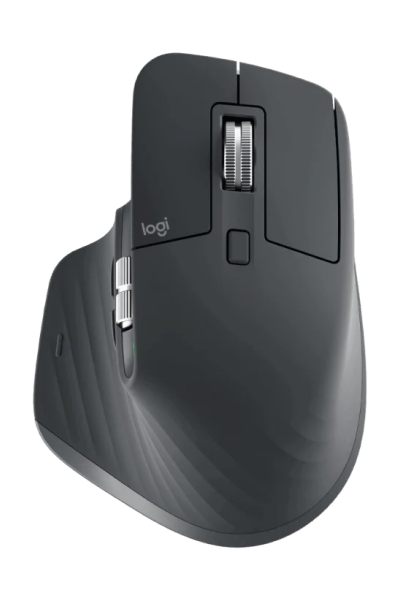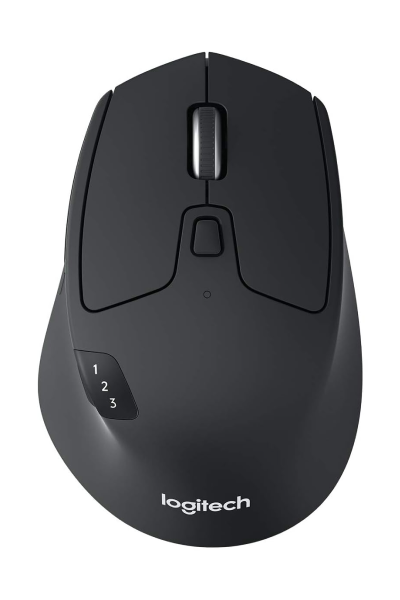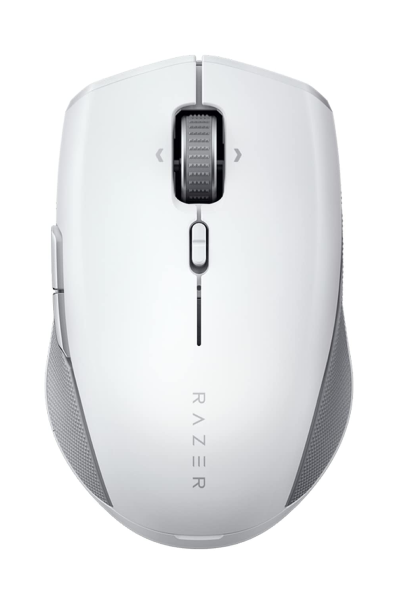Best Wireless & Bluetooth Mice for 2025
In 2025, Wireless and Bluetooth mice continue to evolve with better sensors, extended battery life, and flexible connectivity. We've rounded up six standout models - from productivity champs like the Logitech MX Master 3S to ultra-portable travel mice like the Pebble M350, and gaming picks like Razer's Viper V3 Pro and Pro Click Mini - each offering unique strengths. Below you'll find detailed specs and mixed expert/user pros and cons to help you choose the right mouse for work, gaming, or on-the-go use.
Logitech MX Master 3S
High-end ergonomic wireless mouse featuring an 8,000 DPI Logitech Darkfield sensor (tracks on glass), nearly silent clicks, and support for multi-device Flow connectivity.
Specifications
- Sensor Logitech's Darkfield Laser
- Weight ~141 g
- DPI 200 - 8,000
- Polling Rate 125 Hz
- Connectivity Wireless (Logi Bolt 2.4GHz & Bluetooth)
- Shape Ergonomic (Right-handed)
Pros
- High-quality build with an ergonomic, comfortable shape
- Supports up to 8,000 DPI and works on most surfaces including glass
- Features quiet mechanical clicks and advanced scroll/wheel controls
Cons
- Polling rate is low (125 Hz), so not optimal for fast-paced gaming
- Relatively heavy and bulky; not easily portable
- Premium price point compared to standard gaming mice
Logitech MX Anywhere 3S
Compact wireless mouse designed for portability - ambidextrous and travel-friendly, with a Darkfield laser sensor up to 8,000 DPI and quiet buttons.
Specifications
- Sensor Logitech Darkfield high-precision laser (tracks on glass)
- Weight 93.7 g
- DPI 200-8000
- Polling Rate 125Hz
- Connectivity Wireless (Bluetooth; optional Logi Bolt receiver)
- Shape Ambidextrous compact shape
Pros
- Impressive build quality with a comfortable, compact design.
- High-precision sensor (8K DPI) that works on any surface (even glass).
- Quiet clicks and a dual-mode scroll wheel (notched and free-spin scrolling).
- Connects to up to 3 devices (Bluetooth + optional Bolt receiver) and fully supported by Logitech software.
Cons
- Scroll wheel lacks left/right tilt inputs.
- Some users report occasional Bluetooth connection drops.
- Relatively high cost for a compact mouse.
Logitech M720 Triathlon
Wireless office mouse built for multitasking - ergonomic right-handed shape with thumb rest, long battery life (~24 months), and Easy-Switch connectivity to 3 devices.
Specifications
- Sensor Logitech Advanced Optical Tracking (LED)
- Weight 134.8 g
- DPI 1000 (fixed)
- Polling Rate 125Hz
- Connectivity Wireless USB and Bluetooth
- Shape Right-handed ergonomic with thumb rest
Pros
- Comfortable ergonomic shape with a contoured thumb rest, well-suited for long use.
- Stable wireless performance and multi-device switching (pair up to 3 devices).
- Long battery life (up to 2 years on one AA battery) and robust build.
- Generous set of buttons (6 programmable) and a scroll wheel with a fast/slow mode.
Cons
- Bulky and heavy - not ideal for travel (about 135g).
- Fixed low DPI (1000) - no sensitivity adjustment.
- Scroll wheel can be overly fast, causing overshoot during precise scrolling.
- Some users report occasional pairing or setup quirks when switching devices.
Logitech Pebble M350
Slim, ultra-quiet portable mouse - low-profile ambidextrous design that connects via Bluetooth or USB receiver (Logitech Unifying), with silent click switches and compatibility across Windows, macOS, Linux, and iPadOS.
Specifications
- Sensor Optical (LED)
- Weight 81.6g
- DPI 1000 (fixed)
- Polling Rate 125 Hz
- Connectivity Wireless USB receiver and Bluetooth
- Shape Ambidextrous flat travel design
Pros
- Compact, lightweight design - easy to slip into a bag or pocket for travel.
- Extremely quiet clicks (Logitech SilentTouch™) - ideal for libraries and quiet offices.
- Works well via both USB and Bluetooth; praised for working flawlessly on multiple OS platforms.
- Impressive durability (some users report it surviving multiple drops).
Cons
- Very flat, low-profile design can be uncomfortable for extended palm use.
- Fixed low DPI and basic optical sensor - not suitable for gaming or high-speed work.
- Scroll wheel cannot be unlocked for free-spin (no infinite scroll).
- Less robust than heavier-duty mice - one user noted it feels less sturdy.
Razer Viper V3 Pro
Ultra-lightweight ambidextrous gaming mouse ~54g weight, Razer Focus Pro optical sensor (up to 35,000 DPI), 8000 Hz wireless polling, and Razer HyperSpeed 2.4GHz wireless with wired option.
Specifications
- Sensor Focus Pro Optical Sensor Gen-2
- Weight ~54 g
- DPI 400 - 35,000
- Polling Rate 8000 Hz
- Connectivity Wireless 2.4GHz (HyperSpeed) and wired USB-C
- Shape Symmetrical ambidextrous
Pros
- Extremely lightweight (53-54g) for agile gaming movement.
- Very accurate Razer Focus Pro sensor - ideal for high-speed gaming.
- Comfortable symmetrical design (works for both left/right hands).
- Solid build quality for a featherweight mouse.
Cons
- No Bluetooth or multipoint - wireless only (and can use wired).
- No tilt-scroll feature - scroll wheel lacks free-spin mode.
- A few users have reported double-click issues with the switches over time.
- Premium price for a niche gaming mouse.
Razer Pro Click Mini
Compact ergonomic wireless mouse, silent tactile switches, tiltable scroll wheel, and up to 4-device wireless connectivity (Razer HyperSpeed 2.4GHz + Bluetooth) for productivity use.
Specifications
- Sensor Razer 5G Advanced Optical sensor
- Weight 111 g (with 2xAA batteries)
- DPI up to 12,000
- Polling Rate 1000 Hz
- Connectivity Wireless 2.4 GHz (HyperSpeed) and Bluetooth
- Shape Ambidextrous compact ergonomic
Pros
- Extremely quiet buttons (silent mechanical switches) in a compact form.
- Supports hyper-speed dongle plus Bluetooth - connects up to 4 devices smoothly.
- Excellent battery life (hundreds of hours, even with wireless dongle).
- Glides smoothly with large PTFE feet; scroll wheel has both notched and free-spin modes.
- Very low wireless click latency via dongle (comparable to wired).
Cons
- Too small for very large hands - may feel cramped.
- Requires AA batteries (no built-in recharge)
- Bluetooth mode incurs higher latency (~11.7 ms) compared to dongle
- Some users report durability/connectivity issues after extended use
These six wireless mice cover a range of use cases. The Logitech MX series (Master 3S and Anywhere 3S) excel at productivity with advanced sensors and comfortable designs. The M720 Triathlon is a budget-friendly workhorse for multi-device setups. The Pebble M350 prioritizes portability and silent operation. Razer's Viper V3 Pro targets competitive gamers with ultralight speed, while the Pro Click Mini offers a compact yet premium office experience. By weighing the above pros and cons against your needs (comfort, weight, sensitivity, multi-device capability, etc.), you can pick the wireless or Bluetooth mouse that best fits your 2025 workflow and playstyle.
Sources: Official product pages and manufacturer documentation for specifications. pros/cons are based on expert reviews. images are from official manufacturer webites and belong to their respective owners.
Share on




